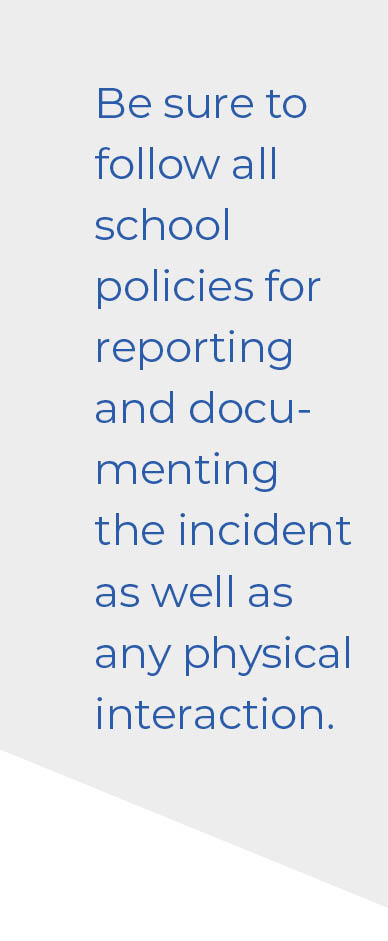A Word from the Legal Team
School Safety: Responses and Resources for Educators
This article is a follow-up to the October 2022 ActionLine “A Word from Legal” column regarding the prohibition of seclusion and limits on the use of physical restraint as behavioral health interventions for students.
In this article we focus on school safety and the appropriate responses and resources for educators when confronted with physical aggression by students. Follow these recommendations to be sure you are up to date on your school system’s protocols.
Seek preventive training and programs to help create a safe school environment. Educators should request and review the local school system’s student code of conduct. The code should emphasize building strong relationships and setting clear behavioral expectations that each school’s administration is responsible for enforcing.

You may also request training, in restorative practices and positive behavioral intervention training. Many school systems are moving away from traditional crisis prevention intervention trainings and are instead using the training programs of the Mandt System or Ukeru. Both the Mandt System and Ukeru programs offer training specifically to eliminate the use of restraint and seclusion as behavioral management techniques by schools and behavioral health providers.
Respond to physical aggression consistent with state law and the protocols of your school. Teachers have the responsibility for creating and maintaining a safe educational environment. When techniques are not working to reduce disruptive behavior, call for help using the call button in your room and refer the student out of the classroom.
The removal of the student must continue until the administration “confers” with the referring teacher per §7-305 of the Education Article. Requirements may be different for special education students, but that does not mean that the school cannot impose discipline or consequences in the case of physical aggression. In most instances, the documentation is critical in determining the appropriate placement for the student. Be sure to follow all school policies for reporting and documenting the incident as well as any physical interaction (10 or more physical restraints of the same child must be reported to MSDE).
Educators should file all appropriate paperwork for worker’s compensation, file for assault leave in the case of physical injuries, and use reasonable force only when there is a risk of serious harm to yourself or others.
Teachers and support staff can organize together to address staff safety concerns. Advocate for better enforcement of student conduct and/or discipline policies by demanding time for appropriate training and identification of resources, including de-escalation and/or restorative justice programs. It is also appropriate to comment publicly at school board meetings and/or through letter-writing campaigns that bring to light safety concerns. Never, however, disclose confidential student information.
If there is a persistent problem with students who display violent behavior in your classroom or building and you are not receiving the support you need toaddress them, work with your assigned UniServ director to document the disruptions. Inform the appropriate school district personnel to assist in addressing the safety of the school environment.
Questions? Contact your local UniServ director.

